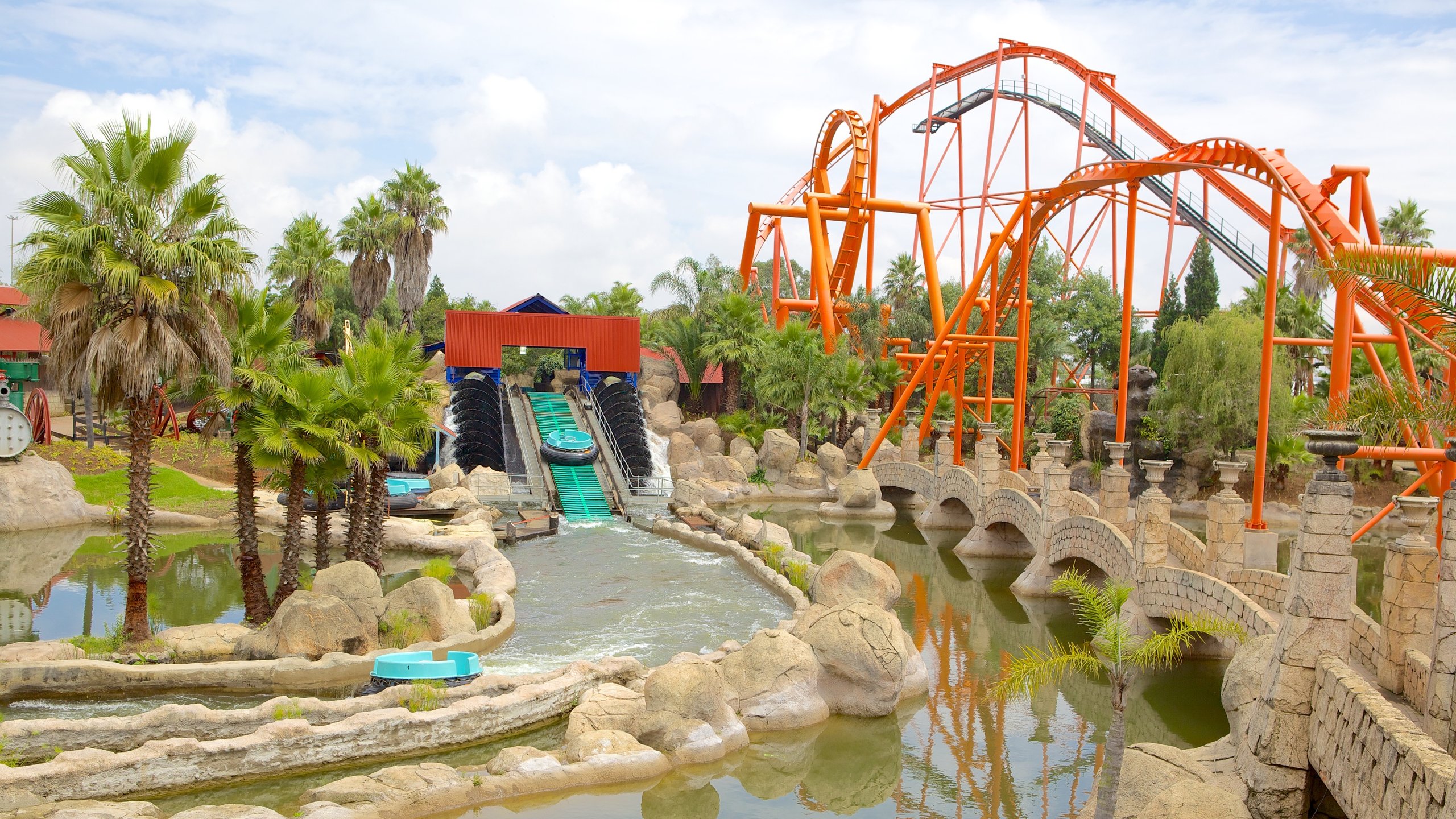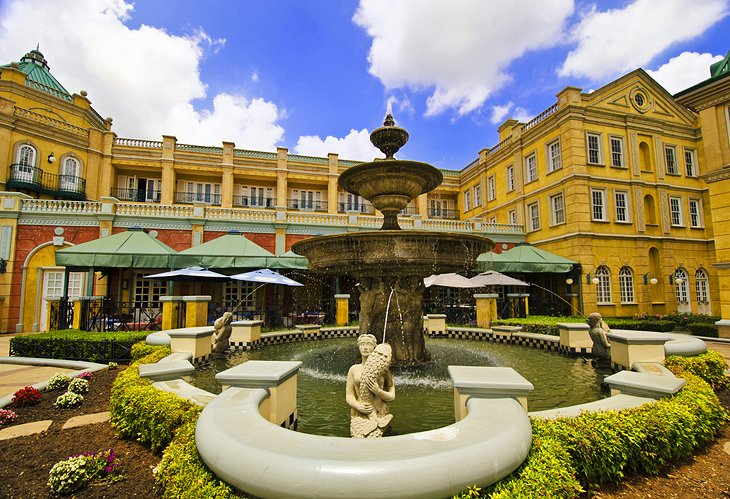Johannesburg North Attractions - Truths
Johannesburg North Attractions - Truths
Blog Article
The Best Strategy To Use For Johannesburg North Attractions
Table of ContentsThe smart Trick of Johannesburg North Attractions That Nobody is Talking AboutJohannesburg North Attractions Can Be Fun For EveryoneExcitement About Johannesburg North AttractionsExamine This Report about Johannesburg North AttractionsThe Only Guide for Johannesburg North AttractionsThe 9-Minute Rule for Johannesburg North Attractions
The city grew on the side of the Witwatersrand Key Reef, a subterranean stratum of gold-bearing quartz-silica conglomerate that arcs for hundreds of miles beneath the Highveld - Johannesburg North attractions. Most of the gold mines in the city ceased procedure in the 1970s, yet in its day the Witwatersrand gold market accounted for more than 40 percent of the world's yearly gold production.Johannesburg has a temperate climate. Summertime temperature levels balance regarding 75 F (24 C); winter season temperatures balance about 55 F (13 C) and just occasionally dip listed below freezing. The city delights in about 8 hours of sunshine per day in both winter season and summer season. Rain averages concerning 28 inches (700 millimetres) per year, however the total varies significantly from year to year.
What rain the city receives falls nearly exclusively in the summer season, frequently in incredible late-afternoon electrical tornados. Air pollution poses a significant issue, especially in the winter season months, when thermal inversions restrain the westward flow of air from the Indian Sea. Air pollution is most severe in the densely cleared up Black townships on the city's perimeter, where several homeowners still count on coal for gas.

The Definitive Guide to Johannesburg North Attractions
The balance of the city is occupied by whites. Holiday accommodation varies in personality and quality.
Physical growth, although somewhat limited by transport, proceeded promptly as immigration to South Africa, and Johannesburg particularly, boosted dramatically. This problem was resolved in the 1930s when the vehicle was introduced in mass manufacturing to South Africa. Autos were, generally, restricted to the rich, and permitted them to transfer to the north of the city and commute into the centre.
The majority of poor residential areas were blended, with poor blacks and whites living together, although the well-off suburbs were usually reserved for whites. This altered with the political election of the National Event in the 1948 political elections, that began to formalise the system known as apartheid. Racism formally marked which suburbs each race might reside in under the Group Locations Act.
The estimated populace of the region is 200,000, [] yet the number of individuals residing in the central city on an informal basis is unidentified, as several are illegal immigrants. Many higher-income residents and YOURURL.com white individuals have moved to the northern residential areas and have actually been changed by lower-income black individuals. The unemployment, education and learning, and age profiles of the location are all unidentified, because of the trouble of obtaining trustworthy info regarding the More Bonuses location.
All about Johannesburg North Attractions
Yeoville and Bellevue have a mix of apartment buildings and solitary residential devices on small whole lots. The region is situated on a hilly divide that runs from eastern to west.

Johannesburg Stadium, a training school for both the Golden Lions and Orlando Pirates, is nearby. The eastern suburban areas of Johannesburg lie in the city's 7th [] and 9th [] areas. The location is also functionally incorporated with East Rand boundary communities beyond the main border of Johannesburg, such as Bedfordview and Edenvale (both component of Ekurhuleni Metropolitan District).
Fascination About Johannesburg North Attractions
R. Tambo International Airport Terminal). The eastern suburban areas are some of the oldest areas of Johannesburg, there are big areas of Jewish and other European backgrounds, most of the populace is English speaking. There are three fairway as well as a number of secured ridges with viewsites. There are several strong and up-market enjoyment and purchasing locations in the eastern such as the Eastgate Shopping Center and the Greenstone mall.
The location is primarily composed of old "matchbox" houses, or four-room homes constructed by the federal government, more tips here that were built to give cheap accommodation for black employees during racism. Soweto is an abbreviation, meaning "South Western Townships". Street after street around is lined with matchboxes; however, there are a few smaller areas where prosperous Sowetans have actually developed homes that are extra similar in stature with those in even more upscale residential areas.
Hostels are another prominent physical feature of Soweto. Originally developed to house male migrant employees, lots of have been improved as residences for couples and families. The N1 Western Bypass skirts the eastern boundary of Soweto. The suburb was not traditionally enabled to create employment centres within the area, so nearly all of its citizens are commuters to other parts of the city.
All about Johannesburg North Attractions
The N1 Western Bypass links the north suburban areas with the north-western suburbs. The houses in the northern suburbs are primarily formal, without considerable areas of casual real estate, or housing that lacks a permanent framework. Although this is a well-known location, there is a fad of land use change from property to commercial, specifically along primary arterial roadways and around well-known nodes.
The location is well connected to road networks, especially along the north-south axis developed by the M1 and N1. Roadways to the east and west are much less well created, as there are no freeways taking a trip in that instructions. In the direction of the northern boundary of the city, the density of development decreases, leaving huge areas of untaught land around Midrand.
The Only Guide to Johannesburg North Attractions
The first suburb to the north of the central city is Parktown, which is situated on a hill ignoring the central city and Hillbrow. It has several affluent residents and Edwardian-style estates, as well as the Education and Clinical campuses of the College of the Witwatersrand. The large concrete Charlotte Maxeke Johannesburg Academic Health Center dominates the sky line of Parktown.
Report this page